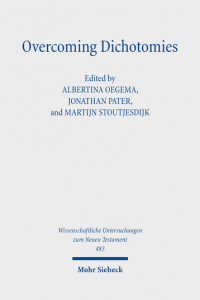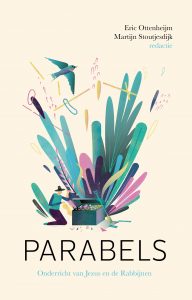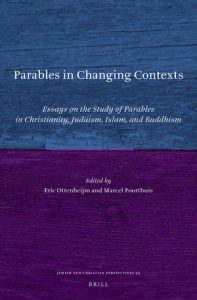 See for more information and buying options the publisher’s website.
See for more information and buying options the publisher’s website.This volume aims to broaden our understanding of the related genres of parables, fables, and similes in the Graeco-Roman world. These genres, which make use of narrative analogy, appear in early Christian and ancient Jewish literatures and in various Graeco-Roman sources. However, despite the fact that these texts were part of the wider cultural context of Graeco-Roman antiquity, they have not yet been thoroughly studied in relation to each other. The present volume brings together contributions on a range of Graeco-Roman, Jewish, and Christian sources, so as to contribute to the study of parables, fables, and similes across disciplinary boundaries. The contributions highlight the fluid boundaries between these different genres, but also demonstrate how their adoption and adaption in different literary works give expression to the distinct identities of the composers.
Albertina Oegema/Martijn Stoutjesdijk: Beyond the Parable-Fable Dichotomy: An Introduction to the Volume− Jonathan Pater: Parables in the New Testament and Rabbinic Literature between Simile and Fable: A status quaestionis
Greek and Roman Literature
− Jeremy B. Lefkowitz: Fabulous Style: Learning to Compose Fables in the Progymnasmata
− Gerard J. Boter: »Look at Heracles!« The Role of Similes and Exempla in Epictetus’s Philosophical Teaching
− Annemarie Ambühl: Animal Similes in Roman Imperial Epic in Their Literary, Cultural, and Political Contexts
− Ruben Zimmermann: The Fables according to Babrius and the New Testament Parables
Early Jewish and Rabbinic Literature
− Sean A. Adams: Fables in Philo of Alexandria: λόγος, μ ῦθος, and παραβολή
− Stephen Llewelyn/Lydia Gore-Jones: Cognitive Blending Theory and the Mashal of the Forest and the Sea in 4 Ezra 4:13–17: The Boundedness of Human Knowledge
− Lieve Teugels: From the Lion to the Snake, from the Wolf to the Bear: Rescue and Punishment in Classical Fables and Rabbinic Meshalim
− Galit Hasan-Rokem: Folk Narrative Poetics of Late Antique Parables and Fables: The Rabbis’ Double Vision
− Lorena Miralles Maciá: Folktale Images in the Midrashic Context: Fable Motifs in Leviticus Rabbah 4
New Testament and Early Christian Literature
− Catherine Hezser: Finding a Treasure: The Treasure Motif in Jewish, Christian, and Graeco-Roman Narratives in the Context of Rabbinic Halakhah and Roman Law
− Justin D. Strong: How to Interpret Parables in Light of the Fable: Lessons from the Promythium and Epimythium
− Mary Ann Beavis: Fables, Parables and Slaves: Epictetus, Aesop and the Gospels in Conversation with North American Slave Narratives
− Konrad Schwarz: Parabolic Stories in the Gospel of Thomas and the Aesopic Tradition: Some Reflections on Reading Practices and Literary Traditions in the Second and Third Century
− Ingvild S. Gilhus: »You Ought to Observe Hounds When They Are Hunting Hares«: Examples and Similes about Animals in the Apophthegmata Patrum
Diachronic Perspectives
− Peter J. Tomson: Fables, Proverbs, Parables, Allegories: Ancient Border-Crossing Lore



Recente reacties